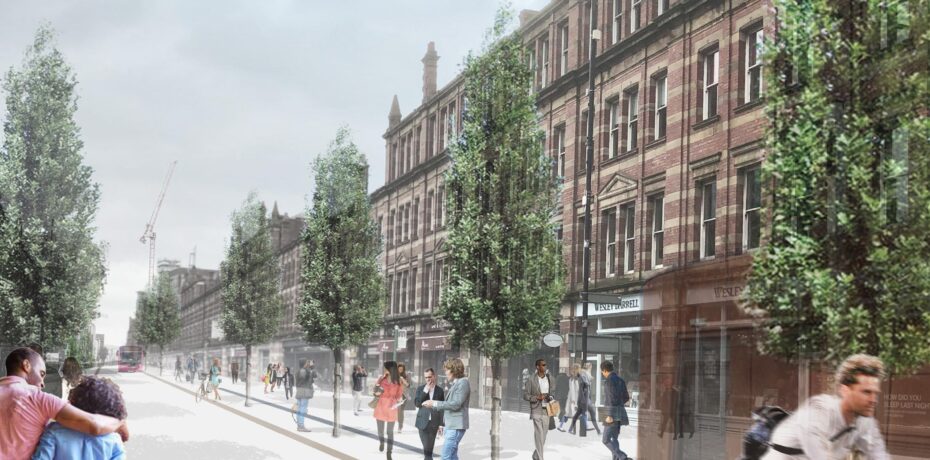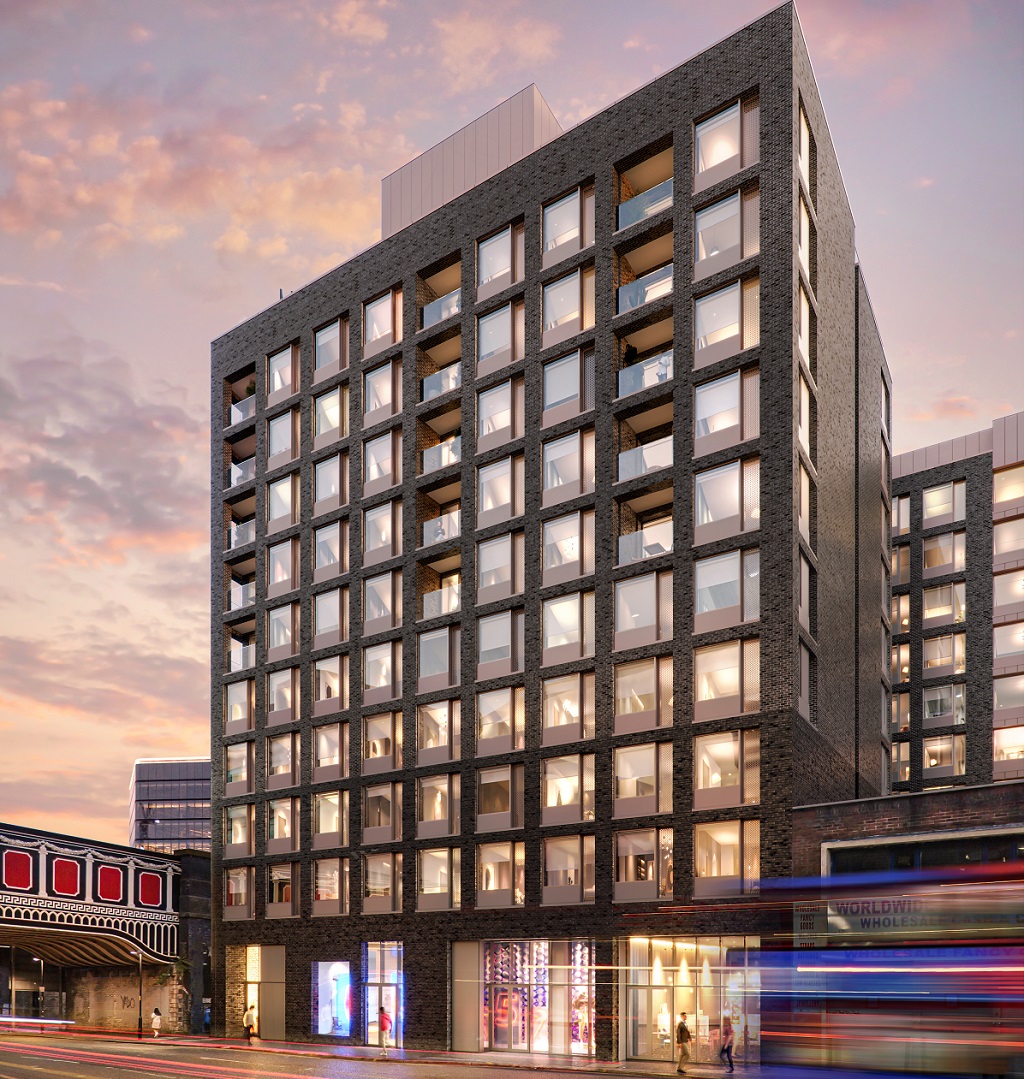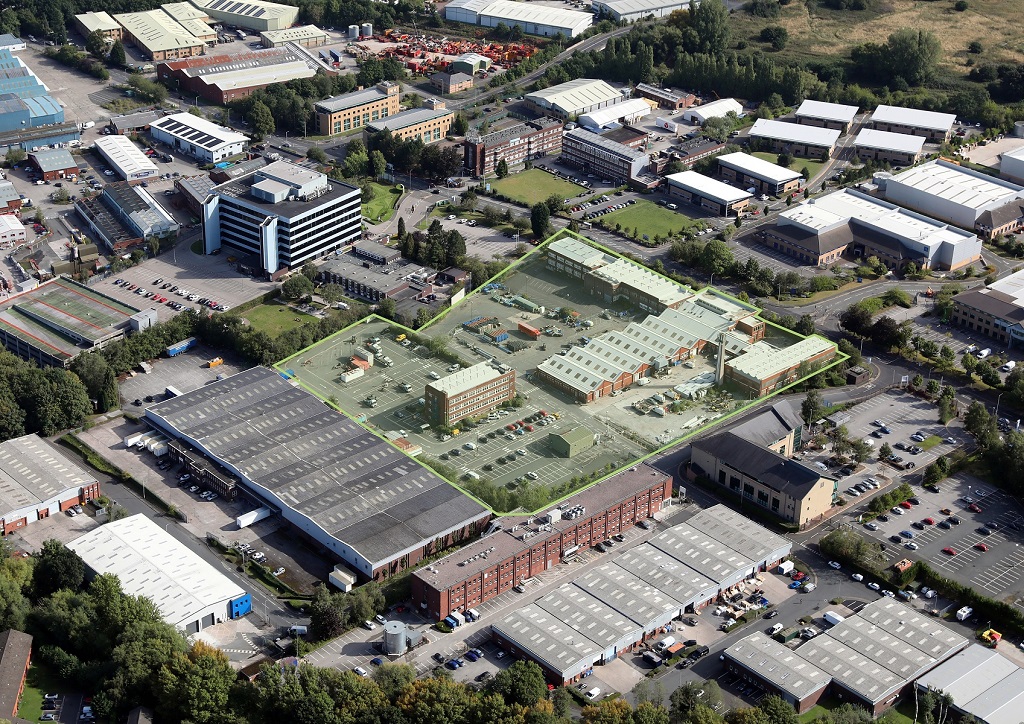Commentary
COMMENT | Time to reclaim Manchester’s streets
It was the celebrated US city philosopher Lewis Mumford who said: “Forget the damned motorcar, build cities for lovers and friends”. It is a mantra that Manchester could do well to take note of, writes Danny Crump.
 Manchester is a city in a state of flux – no British city outside the capital can boast such a transformation over the past two decades nor enjoys the current levels of investment that it continues to attract.
Manchester is a city in a state of flux – no British city outside the capital can boast such a transformation over the past two decades nor enjoys the current levels of investment that it continues to attract.
The result is a city centre that is pepper-potted with a series of developments that will underpin the city’s aspirations to become one of the 21st century’s genuinely competitive global cities.
But for all the individual high quality developments, there is still some way to go in creating the kind of vibrant and vital street network that knits together the increasingly impressive sum of Manchester’s parts.
Greater Manchester’s decision to adopt the National Association of City Transportation Officials’ Global Street Design Guide is a welcome and essential move towards a more thoughtful approach to Manchester’s streets and the untapped opportunities they offer.
As the Mayor of Greater Manchester Andy Burnham has rightly said, it is no coincidence that the cities that regularly top polls for being the most livable have embraced the importance of creating environments that put pedestrians and cyclists first.
It’s now time for the city to reveal the scale of its ambition and grasp the nettle as the opportunities are enormous, once the complex challenges are overcome. Tackling the low hanging fruit of side streets would be progress of sorts but a city of Manchester’s global aspiration should aim higher and confront the city’s main arteries with a strategy that is truly transformational.
Running through the heart of Manchester is one of the city’s oldest thoroughfares – Deansgate. Present in Roman times, today it is 22m wide with a carriageway of more than 17m, more a motorway dissecting the city centre than livable street.
All along its length, tens of millions of pounds are being invested in critical new developments such as Allied London’s St John’s and The Great Northern Warehouse by Trilogy Real Estate – fantastic locations but enveloped in by a traffic dominated environment.
With its narrow footways, pedestrians are marginalized with street frontages not as active as they could be and little or no opportunity, or inclination, to spill out into the heavily traffic street. The route functions as a conveyor belt rather than a gentle flow but a radical intervention could bring radical results.
By removing the on-street parking and reducing the carriageway to 6.5m – enough for two double deckers to pass – Deansgate could become a different kind of space with a human scale, providing a setting and the infrastructure where pedestrian and cyclists come first and people meander rather than march.
According to a study by UCL for Transport for London, the benefits of this kind of intervention are clear and tangible – footfall increases by 40%, there are 17% fewer empty units and there is a 30% uplift in property prices and rents. That is in addition to the health and wellbeing benefits of creating healthier streets.
As daunting as transforming a street like Deansgate may seem, it is not without precedent. In Vienna the famous Mariahilferstrasse has been transformed into a traffic restricted zone along its entire length while the Slovenska Boulevard in Ljubljana in Slovenia has been reimagined as part of 151,000 sq ft of city space that has been reclaimed and rejuvenated on behalf of its residents.
Birmingham’s historic business district is currently undergoing a project that will put pedestrians first with an 80% reduction in traffic built into the strategy and even London’s Oxford Street could soon follow, leading to a projected 40% uplift in footfall.
The time for a radical rethink of Manchester’s city centre is upon us – and it’s those lovers and friends that must be the new priority.
- Danny Crump is director of urbanism at Broadway Malyan





We are really bad at pedestrianising streets in the UK.Look at Market street.What a shambles.Deansgate needs trees.We do not need another main road turning into a Velodrome either.Places for people to walk are all well and good but not if they have to dodge cyclists racing at 30mph inches away from them as they do on Oxford Road.
By Elephant
Absolutely fantastic article. Hopefully it gets seen by the right people at the council
By Anonymous
Walking down Deansgate many years ago with a very senior politician – he said to me that “Cities shouldn’t have trees.” Soon after the council tried to demolish the trees in the square opposite the Crown Courts – only to be stopped by the Evening News journalists. Nothing much changes does it?
By Old Hack
It’s all well and good providing very nice pedestrianised areas and such but you’ve got to get the public transport sorted first. There are some big issues that need addressing; the lack of investment and vision on opening additional lines to anywhere other than the West side of Manchester for the Metrolink (East in particular), dealing with the Stagecoach monopoly of the buses with some routes with too many and other with two few buses, providing more train services to the outer towns that don’t finish by 7pm to name a few. A Greater Manchester Authority (similar to London) that deals with everything as a whole would be an improvement as well as universal payment (oyster type system?), The other issue I have is access for people with disabilities; my other half is disabled and its a nightmare to access the city centre. The introduction of the pedestrianised area along oxford road has made it incredibly difficult for her to reach her university via car/taxi. I understand a need to balance the needs of the many against the few but it seems to me that there is no thought about how some of the most vulnerable people can access the city centre.
By Aevis
This is terrible idea. People forget that traders need access to Dixons.
By Alan P
In general, every main street in the city centre could do with wider pavements, segregated cycle lanes, and more pedestrian crossing points. Also, I know I’ll get a lot of flak for saying this, but Manc Way needs to be downgraded with non-local traffic being directed to Alan Turning Way
By Alex
Deansgate has such amazing potential to be a statement boulevard – I always thought the metrolink second city crossing should have been directed down there with highway traffic removed.
By FurFoxAche
I’ll be honest I’m dead against it
By Alan Partridge
What a joke. Its a very nice idea but until you have decent public transport & remember that most of the general public, due to the chronic public transport system, have no choice but to have to drive into the city centre. The rush hour in Manchester is ridiculous & has never seen any cohesive strategy to look at it & alleviate it. The UKs second city as they want to be? Dream on. People need access of all kinds. Cars are not the problem, lack of access it.
By Anonymous
See also Sønder Boulevard, Copenhagen, which has had play areas, sports courts, benches and table tennis installed along its spine
By Paul
Interesting article. I’d be very happy with more pedestrianisation if we also build ourselves an underground system to make city centre and conurbation-wide transportation lovely and easy. Here’s hoping!
By Calum
Couldn’t agree more. However, it is also time to tax the free to staff car parking in the city centre. This is nothing more than a tax free perk for high earners that encourages the bringing of cars into the city. Sit in a cafe in Springfield in the morning and watch as the single occupancy executive car ride into the underground car park.
By John
Great idea.
It has worked splendidly for Oxford Road – walking from the city centre to the MRI is now a quiet pleasure.
Deansgate has already been narrowed in places (eg. outside Instituto Cervantes and next to Kendals / House of Fraser) which has created mini bottlenecks, so why not just go the whole hog and make is single lane with wider pavements all along?
Also, trees work. Anyone who has marvelled at the large flocks of birds circulating around and over St John’s Gardens will understand the pleasure that even a small density of trees can bring to a city. Go to Spanish cities and see how well they’ve done it there.
By Cityveteran
Great idea. The City Centre needs to be a better place for pedestrians.
By Adam
Now they’ve removed more than 75(?)%of traffic from Portland Street and Princess Street, I’d like to see how much extra room there is for pedestrians – without barriers alongside the edge of the road too.
By Edge
“It has worked well on Oxford road” Try pushing a wheelchair on the curry mile now where the pavements have been narrowed to make cycle lanes wide enough to carry the Flying Scotsman.
By Elephant
Can we have a more accurate CGI please.
Grey skies, spindly trees without leaves, rain, and miserable looking working people in anoraks, and a couple of homeless people too.
By Bill Giles
Why is there not the ubiquitous flock of birds in the sky in the CGI?
Were they on another job that day?
By Bill Oddie
Good point Bill Giles. Since when did everyone in Manchester look like a super model?
By Elephant
Elephant. Since 19th June 2003
By Jumbo
what has happened so far has been fairly disastrous- they get the increased area for pedestrians and cyclists right, but forget that there is actually a need, at some point, to accommodate cars and vans. They can’t just send us all onto the inner ring road while doing nothing to improve the flow or the access. The traffic planning in the city centre is illogical and appears designed to deter drivers; some of us live here, we can’t just disappear! For the record, I live and work in the city centre, and walk to work every day, but I have aged and separate parents that I use my car for.
By Cacaocon
Elephant the only reason the cycle lanes have entroached on the pavement along the curry mile is because there was fierce opposition to getting rid of the on-street parking. It was a poor decision and has brought down the area.
By Aaron
I’ve been suggesting that Deansgate adopts a New York style “paint job” to reclaim street for safe cycling & space to sit & enjoy the city
By robin lawler
Actually Lewis Mumford wrote that Manchester’s incrementalism and lack of sweeping boulevards was something to be commended. Nevertheless, I agree that Deansgate is a disgrace. They should look at Salford’s bold and daring treatment of Chapel Street, the A6 as an alternative.
By Chris Farrow
You could increase significantly the amount of walkable public space and parks in city centre if you did as they do in France and build underground car parking instead of the ugly land taking multi storey car parking inflicted on Manchester and every other France has parks and public squares with the parking underneath.
By Durian